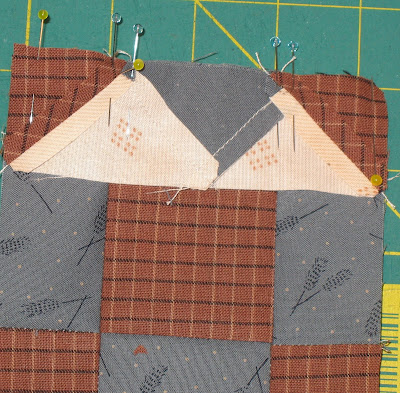
Again, I lay them out to determine orientation and position

Option 1

Option 2
I went with Option 1, and initially sew the small four patches together. Once the first small squares are sewn, I lay them out again, to make sure the orientation is what I want.

Then the small four patches are finished and they are matched up with the larger square. If your seams are the correct size, you should not see any fabric peeking through when you align the four patch and the large square (see below)


Make two like the one below

Press towards large square, then layout, flip the top bit down, align seams, pin and sew (carefully, remove pin just as you get to it).
















